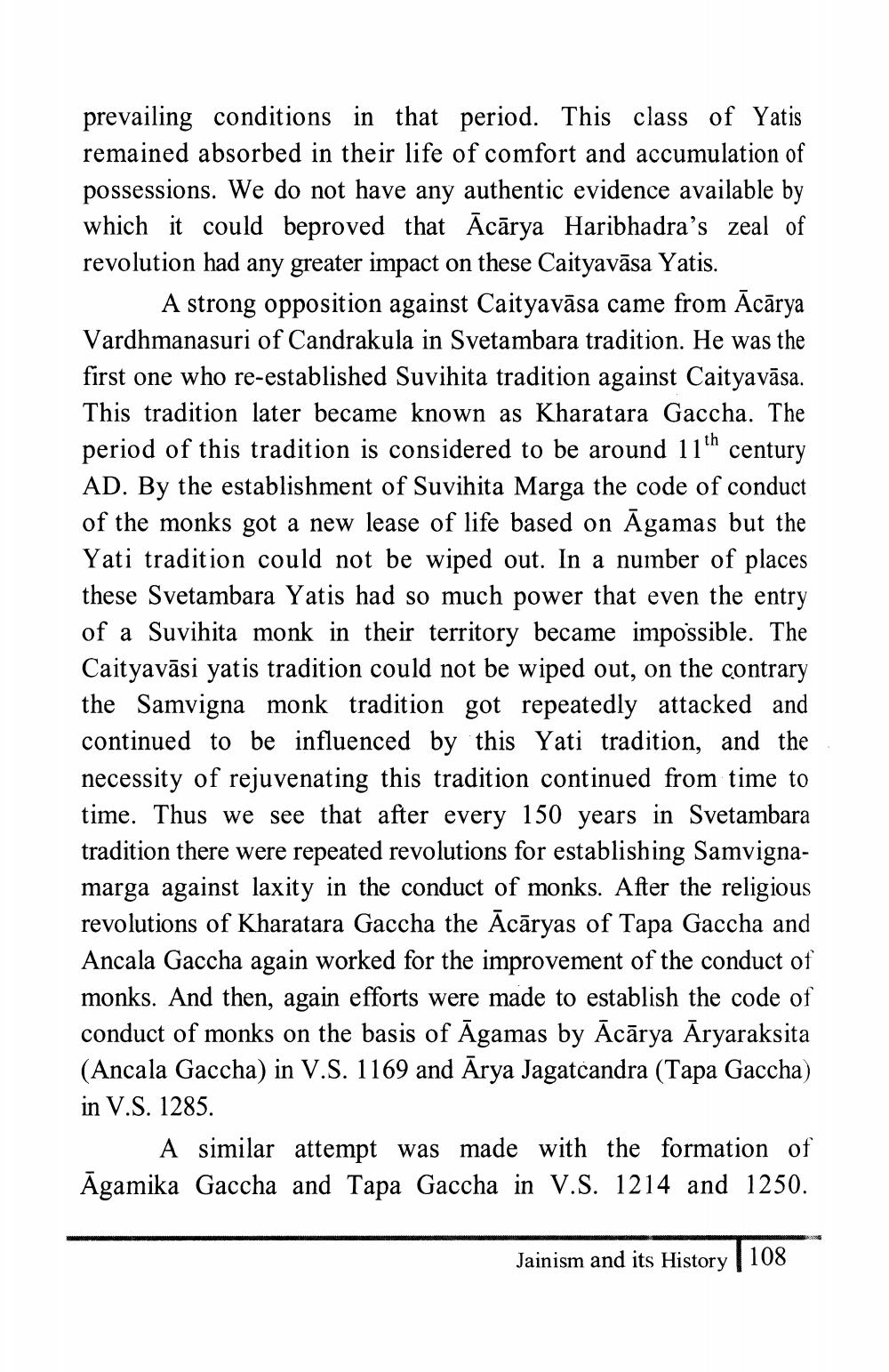________________
prevailing conditions in that period. This class of Yatis remained absorbed in their life of comfort and accumulation of possessions. We do not have any authentic evidence available by which it could beproved that Ācārya Haribhadra's zeal of revolution had any greater impact on these Caityavāsa Yatis.
A strong opposition against Caityavāsa came from Ācārya Vardhmanasuri of Candrakula in Svetambara tradition. He was the first one who re-established Suvihita tradition against Caityavāsa. This tradition later became known as Kharatara Gaccha. The period of this tradition is considered to be around 11th century AD. By the establishment of Suvihita Marga the code of conduct of the monks got a new lease of life based on Āgamas but the Yati tradition could not be wiped out. In a number of places these Svetambara Yatis had so much power that even the entry of a Suvihita monk in their territory became impossible. The Caityavāsi yatis tradition could not be wiped out, on the contrary the Samvigna monk tradition got repeatedly attacked and continued to be influenced by this Yati tradition, and the necessity of rejuvenating this tradition continued from time to time. Thus we see that after every 150 years in Svetambara tradition there were repeated revolutions for establishing Samvignamarga against laxity in the conduct of monks. After the religious revolutions of Kharatara Gaccha the Ācāryas of Tapa Gaccha and Ancala Gaccha again worked for the improvement of the conduct of monks. And then, again efforts were made to establish the code of conduct of monks on the basis of Āgamas by Ācārya Aryaraksita (Ancala Gaccha) in V.S. 1169 and Ārya Jagatcandra (Tapa Gaccha) in V.S. 1285.
A similar attempt was made with the formation of Āgamika Gaccha and Tapa Gaccha in V.S. 1214 and 1250.
Jainism and its History (108




